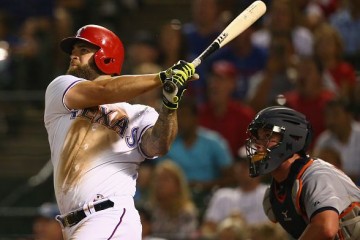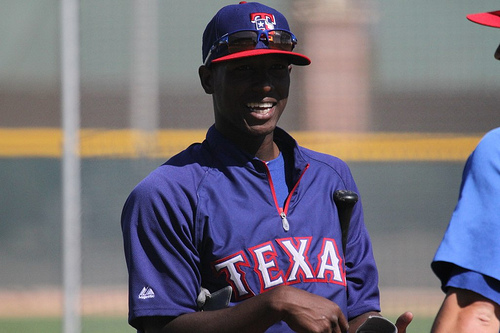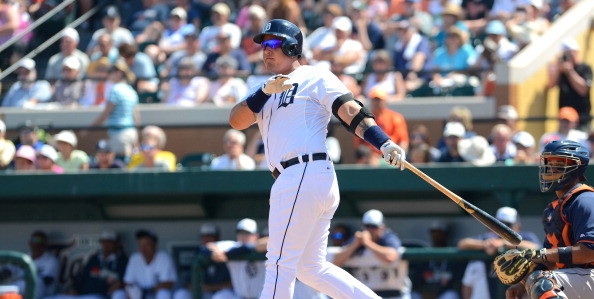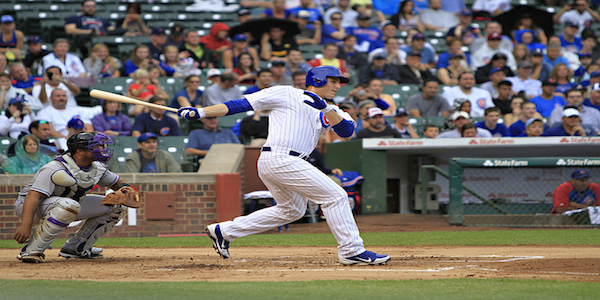2015 Fantasy Baseball: Weekend Trade Update
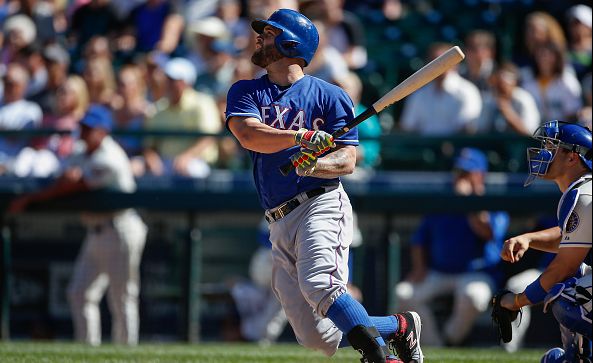
This post was written exclusively for TheFantasyFix.com by Scott Barzilla.
Boston Red Sox Trade Mike Napoli to the Texas Rangers
The post non-waiver deadline trading began with a pair of trades on Friday night. The Boston Red Sox dealt first baseman Mike Napoli and cash to the Texas Rangers in exchange for a player to be named later. Napoli has struggled most of the season, but has hit considerably better after the all-star break. The Rangers are hoping to get a good right-handed power bat to balance out their lineup down the stretch.
Why the Rangers do this deal
On the surface, this doesn’t seem to help the Rangers much. Mike Napoli hasn’t been much of a factor this year overall and the Rangers already have Prince Fielder and Mitch Moreland at first base and designated hitter. Two numbers stick out here for the Rangers. The first is Napoli’s .845 OPS against left handed pitching. Both Fielder and Moreland have struggled some against lefties, so the Rangers will likely use Napoli in a hybrid platoon between first base and designated hitter.
The second number are Napoli’s numbers in the last four weeks. He has a .258/.347/.500 in that span of time. The Rangers hope to capitalize on a hot bat down the stretch. They will owe him only 1.5 million dollars after the Red Sox pay off the rest of his contract. Depending on who they end up trading, it isn’t that much to pay for someone that will end up being a free agent at the end of the season.
Why the Red Sox do this deal
We really don’t know all of the particulars until we find out who they get in return. There are a few reasons why a team might ask for a player to be named. The most obvious is if a draft pick from the 2015 draft is involved. They would have to wait until at least the offseason to consummate such a deal. That recently changed when the Padres and Nationals had a player’s name leak before it could be official. That obviously caused a problem as the player continued to play for the original team until June.
Sometimes, teams have strings attached depending on how much a player plays for his new team or how successful the team is in its hunt for the playoffs. It’s possible that if the Rangers make the playoffs they will receive a nicer prospect in the exchange than if they don’t. At any rate, it looks like the Red Sox are preparing for next season a little early. It has been reported that they feel they can’t continue with Pablo Sandoval at third base and Hanley Ramirez in left field. Maybe, they want to try out Sandoval at first base and Ramirez at third base.
What this deal means for you
In the short term, it makes Napoli a possible pick up. He’s been dropped in most leagues, but if he continues to produce at an 800+ OPS clip then he could become a nice waiver claim down the stretch. Unfortunately for you, he won’t play everyday, but he wasn’t doing that in Boston, so there isn’t much of a difference here. Watch a few games as we see where Boston goes with their first base situation.
Cleveland Indians trade Michael Bourn and Nick Swisher
The Cleveland Indians and the Atlanta Braves completed the first major trade of the August trading period when they consummated what could be charitably labeled as a “change of scenery” trade. The Indians are trading struggling outfielders Nick Swisher and Michael Bourn to the Atlanta Braves for struggling third baseman Chris Johnson. The Indians will also send ten million dollars to offset the differences in the contracts involved.
Why the Braves do this trade
The Atlanta Braves have been slowly but surely shedding long-term contracts from their roster. In taking on two players that will see their deals expire after 2016, they have virtually cleared themselves of every deal that could extend into the new stadium. Freddie Freeman (an acknowledged building block) is the only major player to likely be around when the new stadium opens. Yes, they take on a couple of guys that really don’t have a home, but they will be off the books after next season.
Chris Johnson‘s deal goes into 2017, so that was the real motivation behind making the deal. Nick Swisher can play first base, right field, and left field, so if healthy, they can move him around and get him up to 400 to 500 at bats. With Cameron Maybin in tow, Bourn is a little redundant. Maybin may be out the door following the season. Either he or Bourn could be flipped in the offseason for prospects.
Why the Indians do this trade
The Indians motives might be more immediate. They’ve already dealt David Murphy and Brandon Moss in an effort to clear the logjam in their outfield. Bourn was playing, but he hasn’t played well in any of the three seasons he has been in Cleveland. Nick Swisher hasn’t been healthy enough to give them much in the last couple of seasons. Trading them amounts to dealing dead weight and allows them to possibly chase some more productive players for those spots in the offseason.
Johnson on the other hand could be useful for them at third base. Since Lonnie Chisenhall failed to hold down the position, third base has been a revolving door for the Indians this season. Johnson has played both third base and first base, so he has some utility for them. Johnson has a career .729 OPS, so there is some hope that he can at least be passable there until they find something more substantial.
What this trade means for you
It is likely that none of these players are owned in your league. Bourn might be owned, but is likely stuck on the bench in favor of more productive personnel. Johnson hasn’t produced, but he also hasn’t been able to break into the lineup in Atlanta. He should get an opportunity in Cleveland and you never know what might happen. He is more than capable of getting hot and producing at a 800+ OPS clip. He did it back in 2013, so it isn’t outside the realm of possibility. He is worth keeping an eye on if you are having problems at third base like the Indians.
Arizona Diamondbacks trade Oliver Perez to Houston Astros
The August trading season continued late into the night (and early morning) when the Arizona Diamondbacks traded lefty reliever Oliver Perez to the Houston Astros in exchange for minor league reliever Junior Garcia. Garcia was pitching for the Astros Tri-Cities short season A club and had amassed a 3-0 record this season with a sub 1.00 ERA overall. He had not gotten on any of the top 30 prospect radars yet, but at 19 obviously has plenty of time to develop.
Why Houston makes this trade
Oliver Perez has quite the reputation in real baseball and fantasy baseball circles alike. He signed a three year, 36 million dollar contract back in 2009 with the Mets. He was supposed to be a front line starter for them, but battled wildness and didn’t even survive the contract. He spent a year outside of the big leagues in 2011 and returned as a reliever in 2012. Since returning as a reliever, he has pitched in 215 games and has hurled 170.1 innings. He has a 9-11 record, 3.06 ERA, 2 saves, and 1.31 WHIP during that time period. He’s obviously not the same pitcher that washed out of New York.
This season, his numbers are almost exactly the same as his entire career as a reliever. He has a 3.10 ERA (2.99 FIP according to baseball-reference.com) and 1.241 WHIP. The Astros have only one lefty in their pen after jettisoning Joe Thatcher. Tony Sipp has a 2.70 ERA, but has struggled against lefties in the past. Lefties are hitting a paltry .183 this season off of Perea. More importantly, they have a miniscule .501 OPS against him this season. To seal the deal, Perez is pitching better on the road this season than at Chase Field. The combination makes him a pretty good addition to a bullpen that was leaking some oil down the stretch.
Why Arizona makes this trade
These are the kinds of smart trades that organizations make in August. You have a pitcher that is an impending free agent at a spot (LOOGY) that is a luxury on a second division team. Will Junior Garcia amount to anything? I suppose anything is possible, but what’s the harm? When you can add prospects this time of year it isn’t about any one particular prospect making it. It is about adding volume in the hopes that one of them will make it. It is also about adding volume so that you can turn around and swing these kinds of trades when you become a contender yourself.
What is lost in all of the Astros struggles the past several years is the volume of prospects they had built up in those years. They’ve turned around and dealt seven prospects for four key pieces they can use down the stretch in their run for the playoffs. The Diamondbacks have not been a contender in several seasons, but this is the first time they have taken advantage of the July and August period to become sellers. Look for players like Aaron Hill to be on the block as they attempt to add more.
What this trade means for you
If you are in a five category pitching league then this trade means very little for you. If you are in one of those leagues that counts holds then you might consider adding Perez to your bullpen mix. The Astros have taxed all of their relievers to this point and have relied heavily on Tony Sipp once they jettisoned Joe Thatcher. They will want to defray those innings some because Sipp has been shaky over the last month or so. The Astros play in more close games than the Diamondbacks which could mean more holds for Perez. He had seven holds in Arizona and could easily pick up that many in Houston in the final seven weeks of the season.


